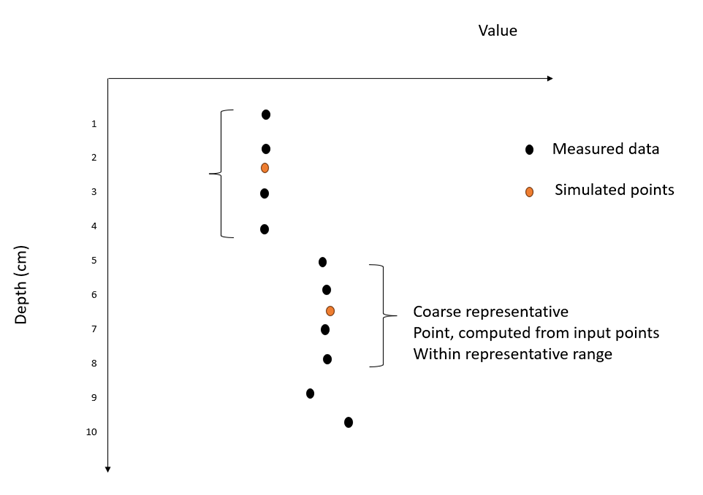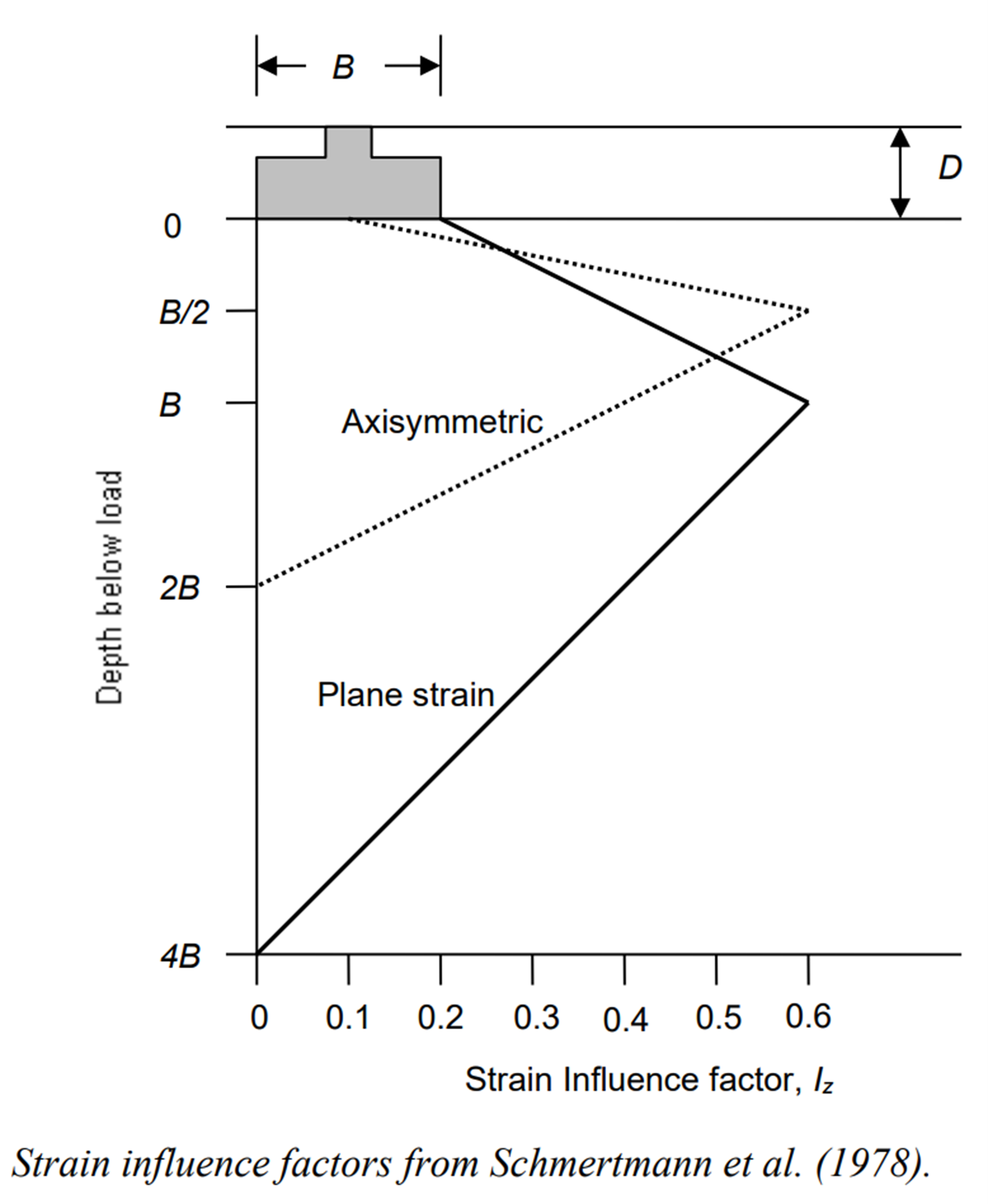Area Simulation Settings
Empirical Method: Schmertmann
- Controls which method of computing settlement is used after simulating CPT parameters in the space.
- The Schmertmann empirical method uses qc values which are simulated in columns of the output space to compute settlement using an empirical formula.
- The method uses simulated qc values, as well as soil unit weight that can either be derived from other simulated CPT parameters, or manually input by the user for the soil.
- More information on the specifics of Schmertmanns method can be found in the Settle3 CPT theory manual.
Load Type: Rectangular
Controls the shape of the simulated load which is placed above each simulated CPT location as input to the selected empirical method.
Length, Pressure, Width
Further adjusts specific properties of the load which is placed above each simulated CPT location as input to the selected empirical method.
Number of Grid Points
Determines the number of simulated CPT sounding locations in the output space, roughly equally spaced populating the region drawn by the user.
At each point the program will simulate CPT parameters along the depths at each simulated output space, generating the contour seen after computation.
Since more CPT points require more simulated output locations, the number of selected grid points is proportional to the output simulation time.
Density with depth: Coarse, Medium, Fine
Controls the number of data points that the simulation considers, greatly affecting runtime.
The input CPT data is condensed to representative input points over a depth range using a weighted average. The length of the range is determined as a function of this option and the estimated vertical correlation length of the data.
The options correspond to specific multiples of the correlation length as follows:
- Coarse -> estimated correlation length / 2.5
- Medium -> estimated correlation length / 3.5
- Fine -> estimated correlation length / 5.5
The estimated correlation length refers to the approximate length along the depth of the CPT sounding for which measured CPT parameters heavily correlated. In this context, we can reduce the input size of the simulations if we do not have to consider all data points close to each other, without greatly affecting the accuracy of simulations since data points within the correlation length are greatly correlated.
For instance: with the coarse option, if your CPT soundings were measured every centimeter, and the estimated vertical correlation length was 10 centimeters, then a representative point is placed with 4cm spacing, and its value is a weighted average of the CPT parameter values in its range, considering distance to the representative point. This adjusted CPT sounding is then used to simulate parameters in the output space, increasing speed relative to simulating with every input point in the CPT.

As you select a smaller multiple of the correlation length, more representative points are created to simulate, increasing the simulation time.
This also affects the output space in which CPT points are simulated. Simulated CPTs are created with measurements at the representative points created in the input space.
If you select multiple parameters, the output space has a number of points simulated equal to the CPT with the largest number of simulated points in the input space. This is a function of the estimated correlation length per parameter, as well as the selected option. This affects all simulated CPTs in the output space, so has a great effect on simulation runtime.
Depth Cut Off: Minimum, Maximum, User-Defined
Simulation results are of best quality when simulating at depths reached by known CPTs in the space. This means that the algorithm is more uncertain when simulating at depths deeper than that reached by CPTs in the simulated input space.
Since simulations which reach deeper depths require more
representative points, the simulation compute time is proportional to
the depth of the simulation, with deeper simulations requiring more
compute time. For area computations, this affects all simulated CPT
locations, greatly affecting runtime.
As CPTs in your project may be drilled to different depths, this option
lets you adjust the shape of the output space with respect to how deep
the output simulations go.
The options adjust the space as follows:
- Minimum -> The output space has simulated points up to the shallowest depth reached by a CPT in the input space.
- Maximum -> The output space has simulated points up to the deepest depth reached by a CPT in the input space
- User-Defined -> The output space has simulated points up to the user defined depth in meters, limited by the maximum depth of a CPT in the input space.
For users who select the Schmertmann empirical method, only depths up to 4 times the foundation width of the simulated load are relevant to the settlement computation:

Thus simulation output is limited to this depth as well, to reduce runtime for information which is not relevant to settlement computation.
Unit Weight
This option pertains to whether a unit weight is to be derived from simulated fs and u2, or if the user wishes for a soil-wide estimation to be used. If this option is checked and a value input, user-defined unit weight will be applied throughout all the simulated CPT locations.
If the option is unchecked, fs and u2 will be simulated along with qc, and used to derive the estimated soil unit weight at each layer in each simulated CPT location, varying with the simulated parameters.
Since simulating soil unit weight requires simulated 2 more parameters for each output point at all simulated CPT locations, unchecking this option increases the simulation time.
To compute simulated unit weight, all non-CPT parameters (atmospheric pressure, unit weight of water, net area ratio) are taken from the project settings and parameters are computed at each output simulated location to determine the estimated unit weight γ:
 |  |  |
More information on the non-CPT parameters can be found in the Settle3 CPT Theory Manual.